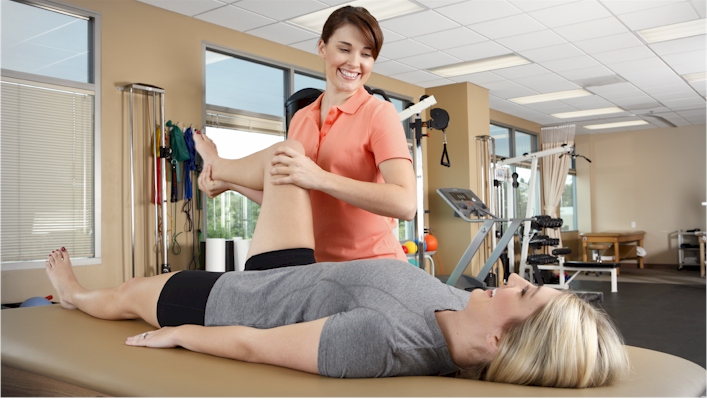
The Impact of Physical Therapy on chronic pain is enormous, for the almost 25 million Americans who struggle with one form of chronic pain or another, obtaining some form of pain relief is a must. Most have tried the simplest pain management techniques like bed rest, ice or heat, and over-the-counter pain medications, but chronic pain forces most to seek medical intervention. In the past, the option of choice for many physicians was prescription pain killers, but the ongoing opioid crisis that claims thousands of lives has led the medical community to alternatives like physical therapy.
Unlike opioid medications which carry the risk of addiction and are only as effective as OTC pain relievers, physical therapy is a low-risk pain management technique that has proven as or more effective than pharmacological solutions for many patients. Physical therapy requires ongoing sessions with a therapist which is somewhat of a time investment but it is less disruptive that taking weeks off for a surgical procedure.
Physical therapy provides many benefits you can’t get from other pain management therapies. Because this kind of therapy focuses on strengthening and increasing flexibility, it improves many aspects of your chronic pain you may not have realized were affecting you. Pain often immobilizes you, tensing your muscles; over time, this muscle tension and inactivity produces secondary centers of pain that exacerbate your initial pain symptoms.
Furthermore, physical therapy is an active—but low-impact—program that is strenuous enough to help your body produce mood-lifting chemicals called endorphins. You may not realize how your pain makes you feel depressed or anxious, but you will probably notice how much better you feel emotionally and physically after a few PT sessions.
When you first begin your physical therapy, your team will perform a medical evaluation as well as examine your medical history to develop a personalized therapeutic program. They will try to identify areas of weakness, tension and diminished functionality; and apply techniques that are most likely to produce a positive improvement.
Physical therapists may draw from a wide array of techniques including
- Light aerobics—this may include walking, stationary biking or swimming in an effort to raise your heart rate. This should induce greater flexibility and circulation.
- Strength building—by using light weights or resistance bands, you will gradually increase muscle tone. This will often relieve pressure on painful areas like lumbar or joints.
- Flexibility training—gentle stretching will improve your range of motion, enabling you to function more normally.
- Manual manipulation—another technique for enhancing blood circulation and muscle relaxation is massage. This is often used in tandem with other exercises for maximum efficacy.
- TENS—transcutaneous electrical nerve stimulation applies low intensity electrical currents to the skin above a pain source to mitigate pain impulses. Although not effective for everyone and only offering short-term relief, TENS has proven successful for many chronic pain sufferers.
Once you become familiar with your personalized PT program, you may be able to perform your sessions at home, with only intermittent tune-up sessions in the therapist’s office.
____________________________________________________________________________________________________
Article written by: Dr. Robert Moghim – CEO/Founder Colorado Pain Care
M.D. Disclaimer: The views expressed in this article are the personal views of Robert Moghim, M.D. and do not necessarily represent and are not intended to represent the views of the company or its employees.



